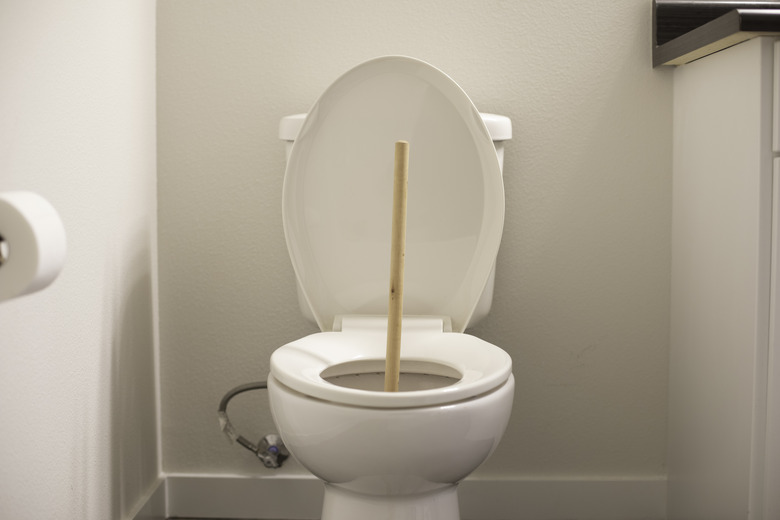How To Clear A Sewer Without A Snake
If your home is serviced by a municipal sewer, your home has a main waste pipe that connects your household drains to the main sewer, and if your home has a septic system, the waste pipe extends to the septic tank. Either way, you have a major problem if a main drain clog develops in this pipe.
Water can't get to the sewer, so it starts backing up, and you'll find that drains and toilets – especially the ones in the basement – empty slowly if at all. As the problem worsens, water will back up into the basement fixtures or the ones on the ground floor. Obviously, at this point, it's time to do something.
You can often clear the sewer yourself. The best tool is a sewer auger, also known as a snake, but you can still do the job if you don't have one. Even though the cost to clear a main sewer line clog can be considerable, you shouldn't hesitate to get professional help if you're unsuccessful. Sewer clogs can be caused by tree roots or septic problems that require the use of special tools and techniques.
Use a Plunger to Clear a Main Drain Clog
You may be able to clear a sewer clog by using a plunger.
- Choose a toilet on the ground floor.
- Tape over the tub, sink and shower drains with duct tape. This prevents the force you develop with the plunger from dissipating through the pipes and focuses it on the clog.
- Get a bellows or force-ball plunger, insert it in the toilet bowl, let it fill with water and then plunge away.
You'll know this technique is working if the standing water in the toilet begins to drain. As soon as this happens, pour 2 or 3 gallons of very hot water in the toilet to help the clog dissolve.
Bust a Sewer Clog With Enzyme-Based Drain Cleaner
It's hardly ever a good idea to put Drano or a similar product in the toilet because it contains sodium hydroxide, which generates heat and can damage the pipes. It's a particularly bad idea if it turns out the clog is caused by tree roots or a septic problem because the corrosive chemical will remain in the pipes and could give skin burns to anyone who tries to clear the clog using other methods.
An enzyme-based main line cleaner is safer, but it takes longer to work. If you purchase one of these products, use it according to the directions and give it a few days to do its thing before you move on to the next method.
Attack a Sewer Clog With a Hose or Power Washer
You may need more force to clear an especially stubborn main drain clog, and you should apply it through one of the drain cleanout fittings. You should have one or two of these in the basement and more outside. Open one of them by unscrewing the cap with a wrench and have a bucket handy to catch water. You'll also want to wear protective clothing, goggles and gloves because the water may be under pressure and could spray when you open the cleanout.
If water does spill out, you're on the right track because it means the clog is downstream of the fitting. Insert a hose with a high-pressure nozzle or preferably a power-washer wand with a 0° (red) or 15° (green) tip. Place the bucket under the cleanout, point the nozzle downstream, pull the trigger and stand back.
A long, sustained blast of water is more effective than a series of short bursts, but stop when the bucket fills and empty it. If you haven't made any progress after emptying the bucket two or three times, it's time to either get an auger or call a plumber.
